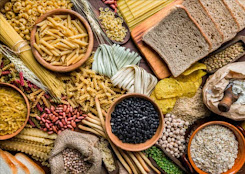How to Lower Blood Pressure
Hello Friend there are some tips for lower blood pressure Diet and Lifestyle Changes and here you will learn how to lower blood pressure with DASH.
High blood pressure, or hypertension, is a common health problem that affects millions of people worldwide. It is often referred to as a "silent killer" because it has no symptoms and can lead to serious health issues such as heart attack, stroke, or kidney failure. However, the good news is that there are many ways to lower blood pressure, and in this article, we will explore some effective tips, diet, and lifestyle changes to help you manage hypertension.
- Understanding Blood Pressure
Before we dive into how to lower blood pressure, let's understand what it is and what causes it. Blood pressure is the force of blood pushing against the walls of your arteries. When this pressure is consistently high, it puts a strain on your heart and blood vessels, leading to various health problems.
Some of the factors that contribute to high blood pressure include genetics, age, obesity, lack of physical activity, smoking, stress, and an unhealthy diet. While some of these factors cannot be controlled, others can be modified to lower blood pressure.
- Tips for Lower Blood Pressure
1. Monitor Your Blood Pressure:
The first step in managing hypertension is to know your numbers. Regularly monitor your blood pressure at home or consult a healthcare provider to keep track of any changes and adjust your treatment accordingly.

2. Reduce Sodium Intake:
Sodium, or salt, is a major contributor to high blood pressure. Aim to limit your sodium intake to less than 2,300 mg per day or even lower if your doctor recommends it.
3. Eaa Balanced Diett :
A healthy diet rich in fruits, vegetables, whole grains, and low-fat dairy products can help lower blood pressure. It is also recommended to limit your intake of saturated and trans fats, as well as sugar and processed foods.

4. Maintain a Healthy Weight:
Being overweight or obese increases the risk of high blood pressure. Losing just a few pounds can help lower blood pressure and improve overall health.

5. Engage in Physical Activity:
Regular exercise can help lower blood pressure and improve heart health. Aim for at least 150 minutes of moderate-intensity activity or 75 minutes of vigorous-intensity activity per week.

6. Quit Smoking:
Smoking damages blood vessels and increases the risk of high blood pressure. Quitting smoking can lower blood pressure and reduce the risk of heart disease and other health problems.
7. Manage Stress:
Chronic stress can increase blood pressure. Find ways to manage stress such as meditation, deep breathing, or yoga.
Diet Changes to Lower Blood Pressure
 |
Diet Changes to Lower Blood Pressure |
 Increase Potassium Intake:
Increase Potassium Intake:
Potassium is a mineral that can help lower blood pressure by counteracting the effects of sodium. Foods high in potassium include bananas, sweet potatoes, spinach, avocados, and salmon.
Add More Calcium-Rich Foods:
Calcium is essential for maintaining healthy blood pressure levels. Some calcium-rich foods include low-fat dairy products, leafy greens, and fortified cereals.
Incorporate Magnesium-Rich Foods:
 Magnesium helps regulate blood pressure and can be found in foods such as spinach, almonds, avocado, and dark chocolate.
Magnesium helps regulate blood pressure and can be found in foods such as spinach, almonds, avocado, and dark chocolate.

Include Whole Grains:
Whole grains such as brown rice, quinoa, and whole-wheat bread are rich in fiber and can help lower blood pressure.
Lifestyle Changes to Lower Blood Pressure:
In addition to diet changes, there are some lifestyle modifications you can make to help lower blood pressure:
Reduce Alcohol Intake:
Drinking too much alcohol can raise blood pressure. Aim to limit your alcohol intake to no more than two drinks per day for men and one drink per day for women.
Get Enough Sleep:
Getting enough sleep is crucial for managing blood pressure. Lack of sleep can increase stress hormones, which can raise blood pressure. Aim for 7-8 hours of quality sleep each night to help regulate blood pressure and improve overall health.









Comments
Post a Comment